Related Research Articles

Theoretical chemistry is the branch of chemistry which develops theoretical generalizations that are part of the theoretical arsenal of modern chemistry: for example, the concepts of chemical bonding, chemical reaction, valence, the surface of potential energy, molecular orbitals, orbital interactions, and molecule activation.
Revaz Dogonadze was a notable Georgian scientist, Corresponding Member of the Georgian National Academy of Sciences (GNAS) (1982), Doctor of Physical & Mathematical Sciences (1966), Professor (1972), one of the founders of Quantum electrochemistry,

Markus J. Buehler is an American materials scientist and engineer at the Massachusetts Institute of Technology (MIT), where he holds the endowed McAfee Professorship of Engineering chair. He is a member of the faculty at MIT's Department of Civil and Environmental Engineering, where he directs the Laboratory for Atomistic and Molecular Mechanics (LAMM), and also a member of MIT's Center for Computational Science and Engineering (CCSE) in the Schwarzman College of Computing. His scholarship spans science to art, and he is also a composer of experimental, classical and electronic music, with an interest in sonification. He has given several TED talks about his work.

Matrix isolation is an experimental technique used in chemistry and physics. It generally involves a material being trapped within an unreactive matrix. A host matrix is a continuous solid phase in which guest particles are embedded. The guest is said to be isolated within the host matrix. Initially the term matrix-isolation was used to describe the placing of a chemical species in any unreactive material, often polymers or resins, but more recently has referred specifically to gases in low-temperature solids. A typical matrix isolation experiment involves a guest sample being diluted in the gas phase with the host material, usually a noble gas or nitrogen. This mixture is then deposited on a window that is cooled to below the melting point of the host gas. The sample may then be studied using various spectroscopic procedures.
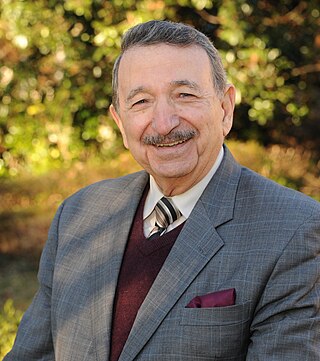
Mostafa A. El-Sayed is an Egyptian-American physical chemist, a leading nanoscience researcher, a member of the National Academy of Sciences and a US National Medal of Science laureate. He was the editor-in-chief of the Journal of Physical Chemistry during a critical period of growth. He is also known for the spectroscopy rule named after him, the El-Sayed rule.

Martin Karplus is an Austrian and American theoretical chemist. He is the Director of the Biophysical Chemistry Laboratory, a joint laboratory between the French National Center for Scientific Research and the University of Strasbourg, France. He is also the Theodore William Richards Professor of Chemistry, emeritus at Harvard University. Karplus received the 2013 Nobel Prize in Chemistry, together with Michael Levitt and Arieh Warshel, for "the development of multiscale models for complex chemical systems".
Vibrational circular dichroism (VCD) is a spectroscopic technique which detects differences in attenuation of left and right circularly polarized light passing through a sample. It is the extension of circular dichroism spectroscopy into the infrared and near infrared ranges.
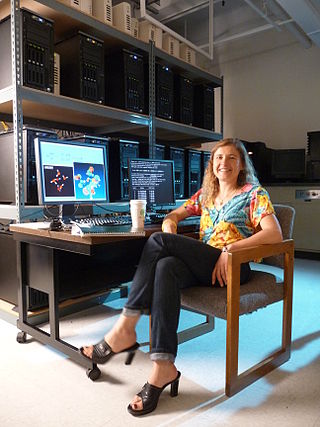
Anna I. Krylov is a Professor of Chemistry at the University of Southern California (USC), working in the field of theoretical and computational quantum chemistry. She is the inventor of the spin-flip method. Krylov is the president of Q-Chem, Inc. and an elected member of the International Academy of Quantum Molecular Science and the Academia Europaea.

Eric Johnson "Rick" Heller is the Abbott and James Lawrence Professor of Chemistry and Professor of Physics at Harvard University. Heller is known for his work on time-dependent quantum mechanics, and also for producing digital art based on the results of his numerical calculations.
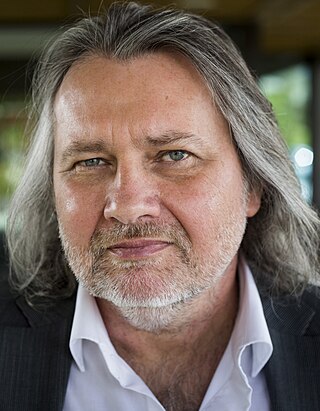
Peter Schwerdtfeger is a German scientist. He holds a chair in theoretical chemistry at Massey University in Auckland, New Zealand, serves as Director of the Centre for Theoretical Chemistry and Physics, is the Head of the New Zealand Institute for Advanced Study, and is a former president of the Alexander von Humboldt Foundation.

CP2K is a freely available (GPL) quantum chemistry and solid state physics program package, written in Fortran 2008, to perform atomistic simulations of solid state, liquid, molecular, periodic, material, crystal, and biological systems. It provides a general framework for different methods: density functional theory (DFT) using a mixed Gaussian and plane waves approach (GPW) via LDA, GGA, MP2, or RPA levels of theory, classical pair and many-body potentials, semi-empirical and tight-binding Hamiltonians, as well as Quantum Mechanics/Molecular Mechanics (QM/MM) hybrid schemes relying on the Gaussian Expansion of the Electrostatic Potential (GEEP). The Gaussian and Augmented Plane Waves method (GAPW) as an extension of the GPW method allows for all-electron calculations. CP2K can do simulations of molecular dynamics, metadynamics, Monte Carlo, Ehrenfest dynamics, vibrational analysis, core level spectroscopy, energy minimization, and transition state optimization using NEB or dimer method.
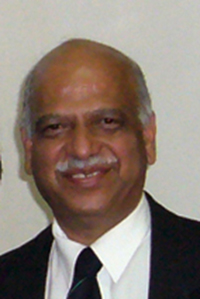
Shridhar Ramachandra Gadre is an Indian scientist working in computational quantum and theoretical chemistry.

Karl James Jalkanen, FRSC,, is a research scientist in molecular biophysics. He is currently a research scientist at the Gilead Sciences new La Verne, California manufacturing facility in the Department of Technical Services.

Donald Gene Truhlar is an American scientist working in theoretical and computational chemistry and chemical physics with special emphases on quantum mechanics and chemical dynamics.
Sharon Hammes-Schiffer is a physical chemist who has contributed to theoretical and computational chemistry. She is currently a Sterling Professor of Chemistry at Yale University. She has served as senior editor and deputy editor of the Journal of Physical Chemistry and advisory editor for Theoretical Chemistry Accounts. As of 1 January 2015 she is editor-in-chief of Chemical Reviews.
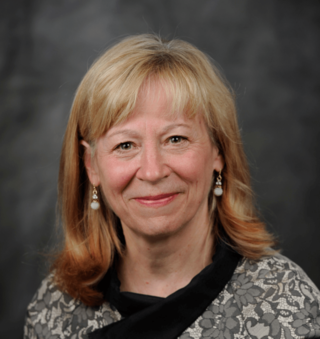
Geraldine Lee Richmond is an American chemist and physical chemist who is serving as the Under Secretary of Energy for Science in the US Department of Energy. Richmond was confirmed to her DOE role by the United States Senate on November 5, 2021. Richmond is the Presidential Chair in Science and professor of chemistry at the University of Oregon (UO). She conducts fundamental research to understand the chemistry and physics of complex surfaces and interfaces. These understandings are most relevant to energy production, atmospheric chemistry and remediation of the environment. Throughout her career she has worked to increase the number and success of women scientists in the U.S. and in many developing countries in Africa, Asia and South America. Richmond has served as president of the American Association for the Advancement of Science, and she received the 2013 National Medal of Science.
Tip-enhanced Raman spectroscopy (TERS) is a variant of surface-enhanced Raman spectroscopy (SERS) that combines scanning probe microscopy with Raman spectroscopy. High spatial resolution chemical imaging is possible via TERS, with routine demonstrations of nanometer spatial resolution under ambient laboratory conditions, or better at ultralow temperatures and high pressure.
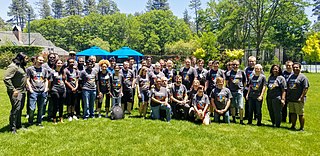
Center for Chemistry at the Space-Time Limit or CaSTL Center is a National Science Foundation Center for Chemical Innovation.
Anne Bowen McCoy is a theoretical chemist. She is the Natt-Lingafelter Professor of Chemistry at the University of Washington, and her research interests include vibrational spectroscopy, hydrogen bonding, and charge-transfer bands. She received the 2023 Jack Simons Award in Theoretical Chemistry “for her development and application of theoretical methods for analyzing the vibrational spectra & dynamics of floppy molecules and clusters.”

Philip R. Bunker is a British-Canadian scientist and author, known for his work in theoretical chemistry and molecular spectroscopy.
References
- ↑ "Lasse Jensen" (PDF). Retrieved February 10, 2014.
- ↑ Dhabih V. Chulhai, Zhongwei Hu, Justin E. Moore, Xing Chen, and Lasse Jensen (2016). "Theory of Linear and Nonlinear Surface-Enhanced Vibrational Spectroscopies". Annual Review of Physical Chemistry . 67: 541–564. Bibcode:2016ARPC...67..541C. doi:10.1146/annurev-physchem-040215-112347. PMID 27090843.
{{cite journal}}: CS1 maint: multiple names: authors list (link) - ↑ John L. Paython, Seth M. Morton, Justin E. Moore, and Lasse Jensen (2014). "A Hybrid Atomistic Electrodynamics–Quantum Mechanical Approach for Simulating Surface-Enhanced Raman Scattering". Accounts of Chemical Research . 47 (1): 88–99. doi:10.1021/ar400075r. PMID 23965411.
{{cite journal}}: CS1 maint: multiple names: authors list (link) - ↑ "Lasse Jensen". Google Scholar . Retrieved March 25, 2017.
- ↑ "The Presidential Early Career Award for Scientists and Engineers: Recipient Details: Lasse Jensen". NSF.